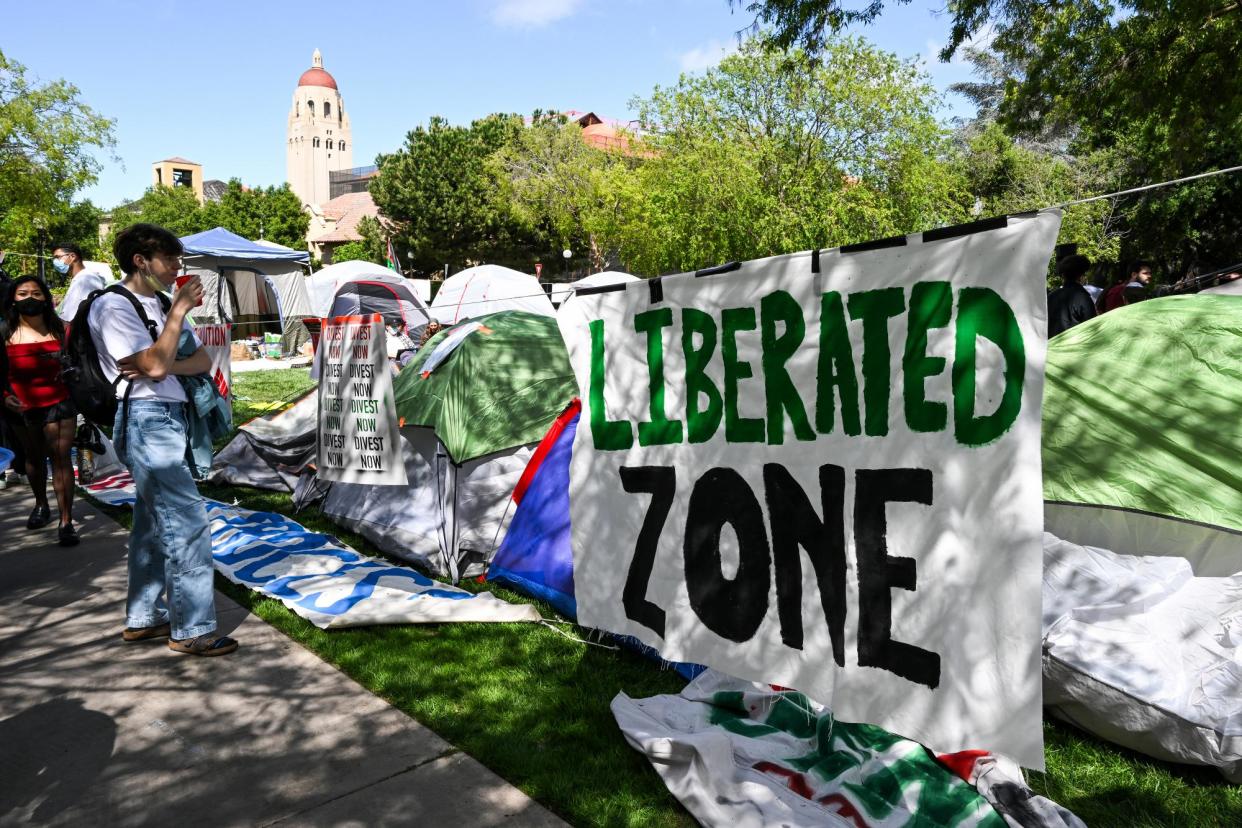Police arrest student protesters who occupied Stanford president’s office

Police at Stanford University arrested a group of pro-Palestinian demonstrators who had barricaded themselves inside the campus president’s office on Wednesday morning to demand that the school divest from Israel.
A group of about a dozen students staged an occupation of the office of Richard Saller, Stanford’s president, while roughly 50 others linked arms outside, the Stanford Daily reported. The group entered the building around 6am on Wednesday, the final day of classes for the spring quarter, and said they intended to stay until the university met its demands.
“Stanford students have tried, repeatedly, to engage with administration through protest,” the students said in a statement, noting there have been more than 20 rallies since October. “Each time, administration has refused. The university is profiting off the genocide of Palestinians as we speak.”
The university confirmed the takeover, saying in a statement that “a group of individuals this morning unlawfully entered Building 10, which houses the offices of the president and provost”.
Police entered the building around 7.35am and arrested 13 people, including a student journalist, the Daily reported.
The action at Stanford follows a wave of protests at universities across the US over the violence in Gaza. Student activists have demanded that their schools divest from companies profiting from the war in Gaza as well as Israel itself.
Stanford students who participated in Wednesday’s protest would be immediately suspended, and any seniors would not be allowed to graduate, the university president, Richard Saller, and provost, Jenny Martinez, said in a joint statement.
They said the university also removed a student encampment of Palestine supporters on Wednesday, which had been set up on campus on 25 April, citing public safety concerns and violations of school policies.
“The situation on campus has now crossed the line from peaceful protest to actions that threaten the safety of our community,” they said, adding that demonstrators had recently tried to occupy a different building.
One law enforcement officer was lightly injured when he was shoved by protesters interfering with a transport vehicle, a university spokesperson, Dee Mostofi, wrote in an email to the Associated Press. Other campus activities were not affected, she said.
In addition to the damage indoors, the president and provost said there was extensive graffiti on the sandstone buildings and columns of the Main Quad. Video posted on social media showed police busting in a door. Other photos showed an office desk splattered with a red liquid.
“This graffiti conveys vile and hateful sentiments that we condemn in the strongest terms,” the president and provost said, adding that it remained unclear who graffitied the university.
Sarah Lebaron, a Stanford physics student, said she did not think Wednesday’s demonstration and graffiti were an effective way to protest against the war in Gaza or question university endowments.
“I think the goal is to have Stanford divest from Israel. That is their stated goal. But I don’t see how these actions necessarily lead to that goal,” Lebaron said.
Police have arrested thousands of people at the largely non-violent protests on campuses from California to New York. Within the University of California, academic workers are on strike over the system’s crackdown on demonstrations. On Tuesday, the UC system sued the United Auto Workers (UAW), the labor union supporting the striking workers, in an effort to immediately end the stoppage.
The Associated Press contributed


